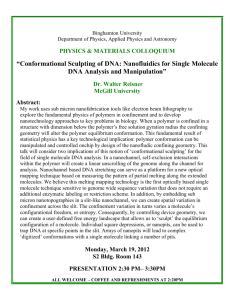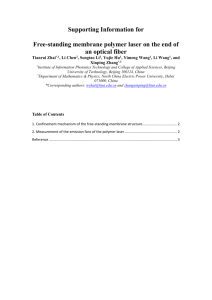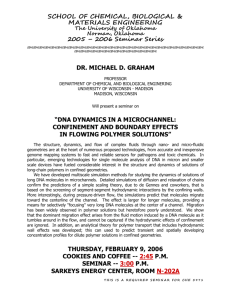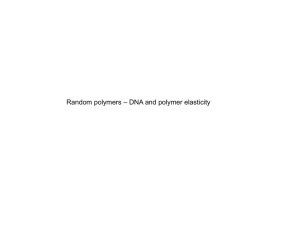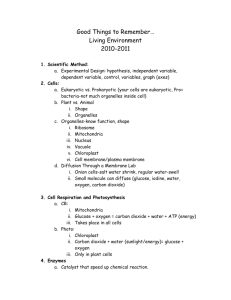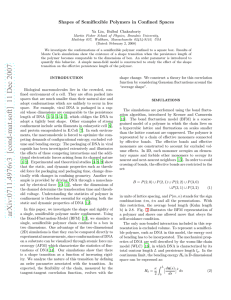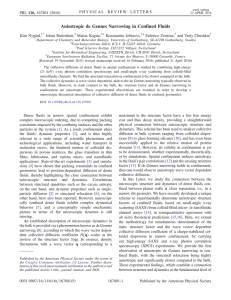Metastable configurations of confined random walks
advertisement
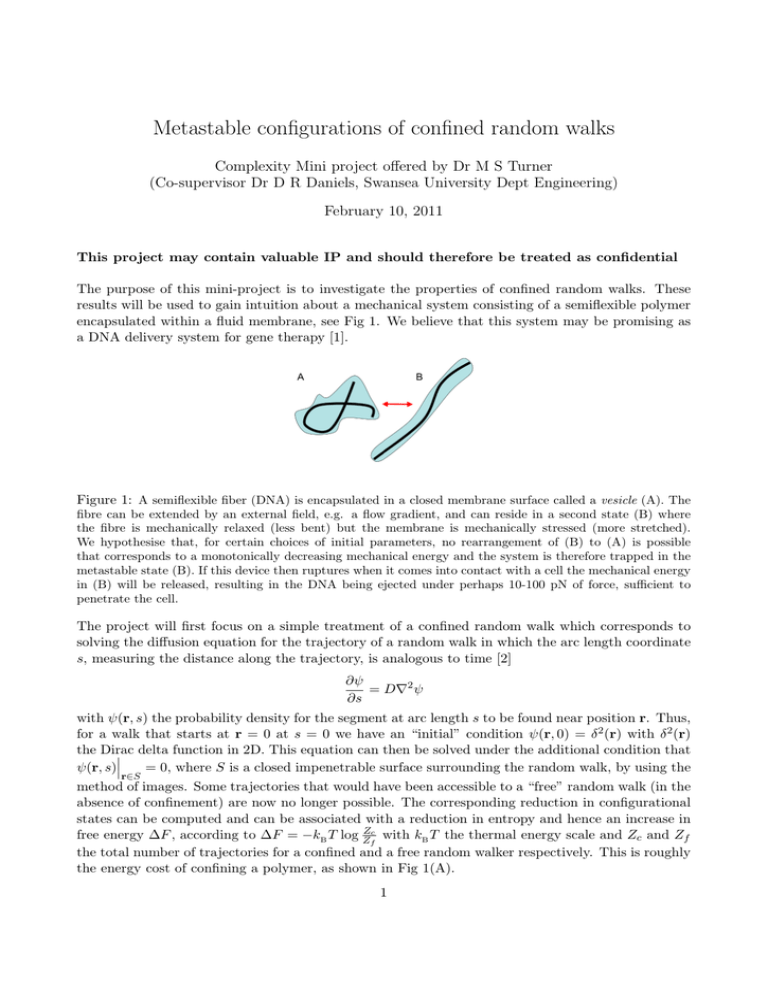
Metastable configurations of confined random walks Complexity Mini project offered by Dr M S Turner (Co-supervisor Dr D R Daniels, Swansea University Dept Engineering) February 10, 2011 This project may contain valuable IP and should therefore be treated as confidential The purpose of this mini-project is to investigate the properties of confined random walks. These results will be used to gain intuition about a mechanical system consisting of a semiflexible polymer encapsulated within a fluid membrane, see Fig 1. We believe that this system may be promising as a DNA delivery system for gene therapy [1]. Figure 1: A semiflexible fiber (DNA) is encapsulated in a closed membrane surface called a vesicle (A). The fibre can be extended by an external field, e.g. a flow gradient, and can reside in a second state (B) where the fibre is mechanically relaxed (less bent) but the membrane is mechanically stressed (more stretched). We hypothesise that, for certain choices of initial parameters, no rearrangement of (B) to (A) is possible that corresponds to a monotonically decreasing mechanical energy and the system is therefore trapped in the metastable state (B). If this device then ruptures when it comes into contact with a cell the mechanical energy in (B) will be released, resulting in the DNA being ejected under perhaps 10-100 pN of force, sufficient to penetrate the cell. The project will first focus on a simple treatment of a confined random walk which corresponds to solving the diffusion equation for the trajectory of a random walk in which the arc length coordinate s, measuring the distance along the trajectory, is analogous to time [2] ∂ψ = D∇2 ψ ∂s with ψ(r, s) the probability density for the segment at arc length s to be found near position r. Thus, for a walk that starts at r = 0 at s = 0 we have an “initial” condition ψ(r, 0) = δ 2 (r) with δ 2 (r) the Dirac delta function in 2D. This equation can then be solved under the additional condition that ψ(r, s) = 0, where S is a closed impenetrable surface surrounding the random walk, by using the r∈S method of images. Some trajectories that would have been accessible to a “free” random walk (in the absence of confinement) are now no longer possible. The corresponding reduction in configurational states can be computed and can be associated with a reduction in entropy and hence an increase in free energy ∆F , according to ∆F = −kB T log ZZfc with kB T the thermal energy scale and Zc and Zf the total number of trajectories for a confined and a free random walker respectively. This is roughly the energy cost of confining a polymer, as shown in Fig 1(A). 1 Next, this result is to be compared with the results of a mean field treatment of confinement in which the surface is approximated as providing a harmonic confining potential U (r) = kr2 , where k is to be chosen self-consistently to mimic the effect of confinement and r = |r|. The results of these two analyses will be compared and their connection with the geometry shown in Fig 1 will be reassessed. Finally, we will approach the configuration shown in Fig 1(B). We will first analyse the role of anisotropic confinement using the same approaches as above but where the confining box and potential are suitably anisotropic. If time permits there are many additional avenues that can be pursued [3], including a treatment of Euler buckling that occurs when fibre of length L becomes linearly unstable with respect to the lowest bending mode. This happens when the force on its ends, provided by the membrane in Fig 1(B), exceeds fc ' κ/L2 , with κ the fibre’s rigidity, a constant material parameter. In the context of Fig 1(B) this buckling is complicated by the presence of a confining tube, the effects of which can be introduced at a number of different levels of sophistication. The student will be expected to familarise him/herself with the solution of the diffusion equation using the method of images. This will require basic analytic skills. The project will deliver an estimate of the energy of confining a polymer in both an isotropic and anisotropic geometry. These results may help in the design of future DNA delivery technologies. There is considerable scope for extension to a PhD via more complete analytical treatments, including perturbative approaches. References [1] S. D. Patil, D G. Rhodes, and D. J. Burgess. DNA-based therapeutics and DNA delivery systems: A comprehensive review. AAPS Journal, 07:E61–E77, 2005. [2] M. Doi and S. F. Edwards. The Theory of Polymer Dynamics. Oxford University Press, Oxford, UK, 1986. [3] D. R. Daniels and M. S. Turner. Spicules and the effect of rigid rods on enclosing membrane tubes. Phys. Rev. Lett., 95:238101, 2005.
